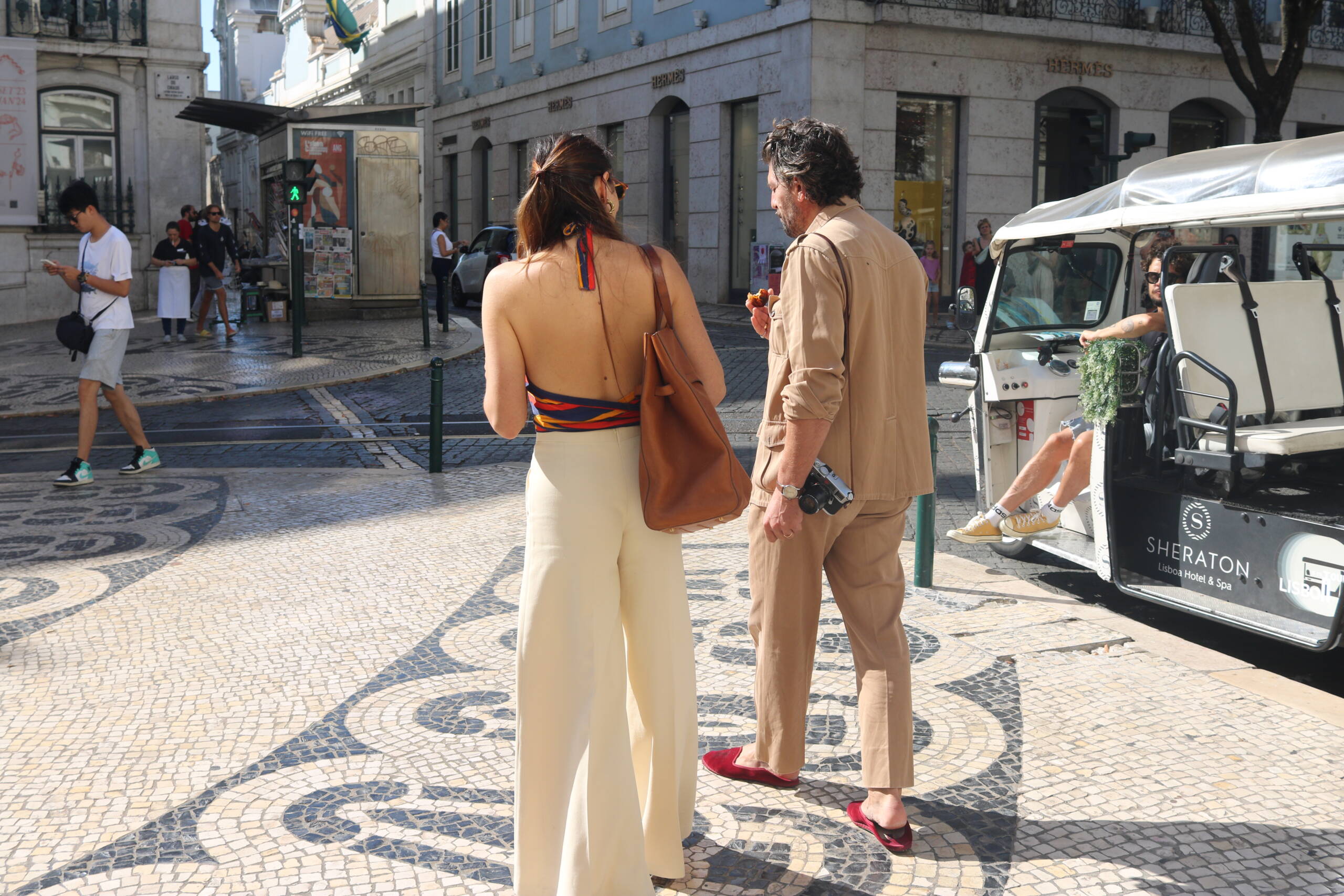There’s something unmistakable about the way a Leica dangles from someone’s hand, not even in use but already turning heads. In this Lisbon street scene, the man carries it almost casually, as if it were just another accessory, yet you can feel the weight of what it represents—heritage, craftsmanship, and a certain aura that whispers, I know what I’m doing. The irony is that a Leica rarely blends in. Instead, it has this knack for attracting attention, not just from fellow photographers who recognize the red dot but also from curious onlookers, and sometimes the wrong kind of attention—the opportunistic kind that notices its value more than its artistry.

The setting amplifies the contrast. The patterned calçada Portuguesa beneath their feet glistens in the late afternoon sun, while trams and tuk-tuks buzz by. She, with her open-back top and wide-leg trousers, strides effortlessly into the rhythm of the city, while he, in muted beige and red slippers, is clearly more focused on the pastry in his hand than on guarding that camera. There’s an almost cinematic quality here: the Hermes storefront in the background, the Sheraton-branded tuk-tuk waiting like a modern carriage, the casual pedestrian in sneakers scrolling through his phone. Everything speaks to a mix of old wealth, casual leisure, and the kind of charm that Lisbon exudes effortlessly.
But this is also where the paradox lies. A Leica, with all its cool elegance, is not invisible. It turns a simple street wander into a performance, for better and worse. People notice you. Sometimes they nod with quiet respect, other times they calculate the resale value. In cities like Lisbon, with its narrow alleyways and lively plazas, it can be both a creative companion and an uninvited liability. Perhaps that’s part of the Leica mystique—you don’t just carry it; you carry the aura, the risks, and the subtle tension between artistry and vulnerability.
Leave a Reply